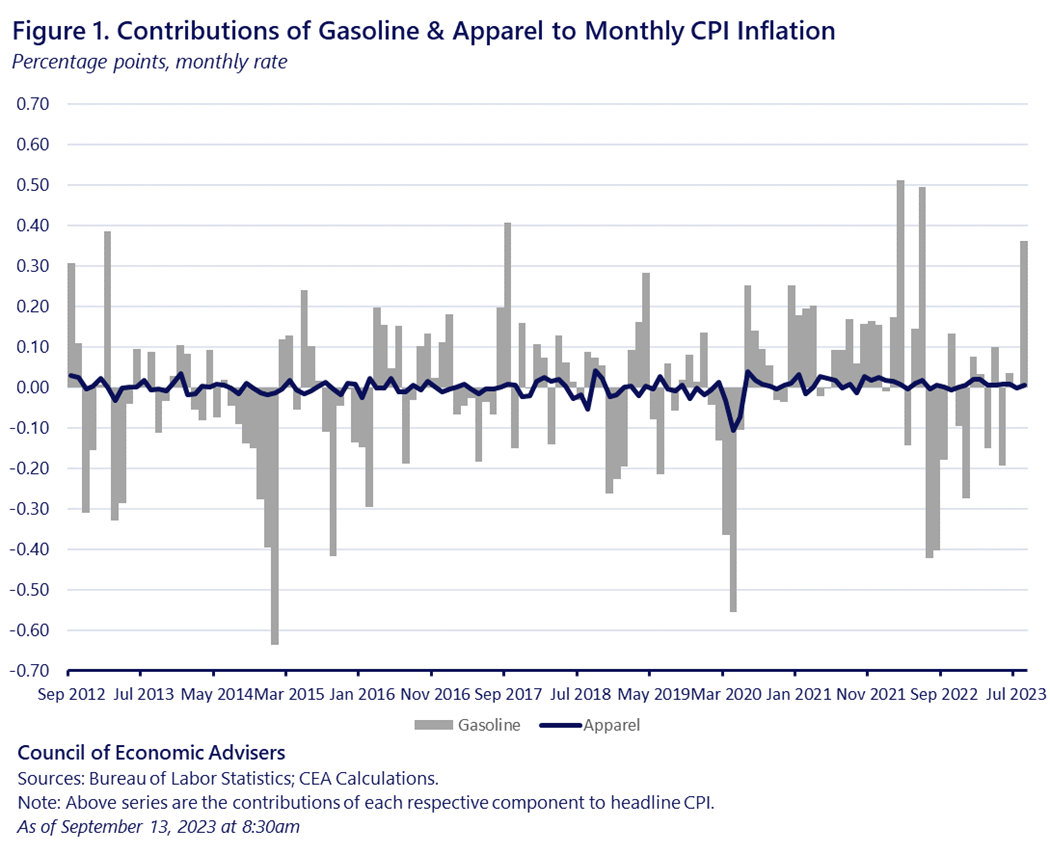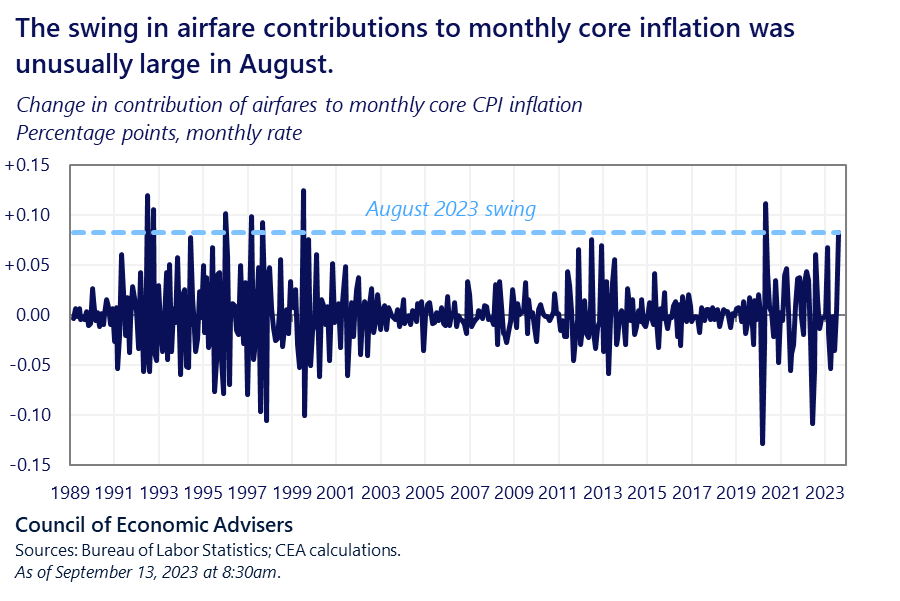The August 2023 Consumer Price Index
Headline Consumer Price Index (CPI) inflation was 0.6 percent in August and 3.7 percent over the past year. Both of these rates were a step up from recent inflation reports, and the main factor behind the jump was the August increase in the price of retail gasoline. This price went up 10.6 percent over the month, and gasoline contributed 34 basis points of the overall monthly CPI, or a bit more than half of the 0.6 percent rate (over the past year, the gasoline price is down 3.3 percent). In this blog, we take a brief look at the role of the gasoline price in inflation and how it relates to the pressing question of whether inflationary pressures are reliably easing.
The first point to note about the gasoline price is that it is highly volatile. The standard deviation of monthly changes in gasoline prices was 5.7 percentage points from 2000 to 2019. For the overall CPI without energy, the standard deviation was 0.1 percentage point over this period.
Another way to view this volatility is to compare the contribution to the monthly CPI of two of the index’s components: gasoline and apparel. Within the CPI basket, the two are weighted in the same ballpark: apparel is about 2.5 percent while gasoline is roughly 3.4 percent. Yet gasoline is noticeably more volatile.

This high volatility is one reason why economists exclude gasoline and other energy components from the headline inflation measure to calculate “core” inflation, a measure that also excludes food (food prices are also volatile, though usually less so than energy). In August, core inflation rose by 0.3 percent, slightly above expectations of 0.2 percent. Over the past three months, core CPI has risen 2.4 percent at an annual rate, down from 5.0 percent during the prior three-month period, and the lowest such rate since March 2021.
It is good news to see that core inflation continues to decelerate, since this measure better captures the more persistent, underlying trend in inflation. Yet, even the core measure is not immune to the effects of energy prices. The tick up in core between July and August appears to be mostly explained by an unusually large upswing in airfare inflation (airfares are one of the most energy-sensitive parts of core).

Prices of gasoline and food are highly visible—one sees the gasoline price on every other block!—and have a large impact on family budgets. The CEA will continue to carefully track these volatile components of CPI as well as the underlying trend in coming reports.
See President Biden’s statement on the CPI report here.

